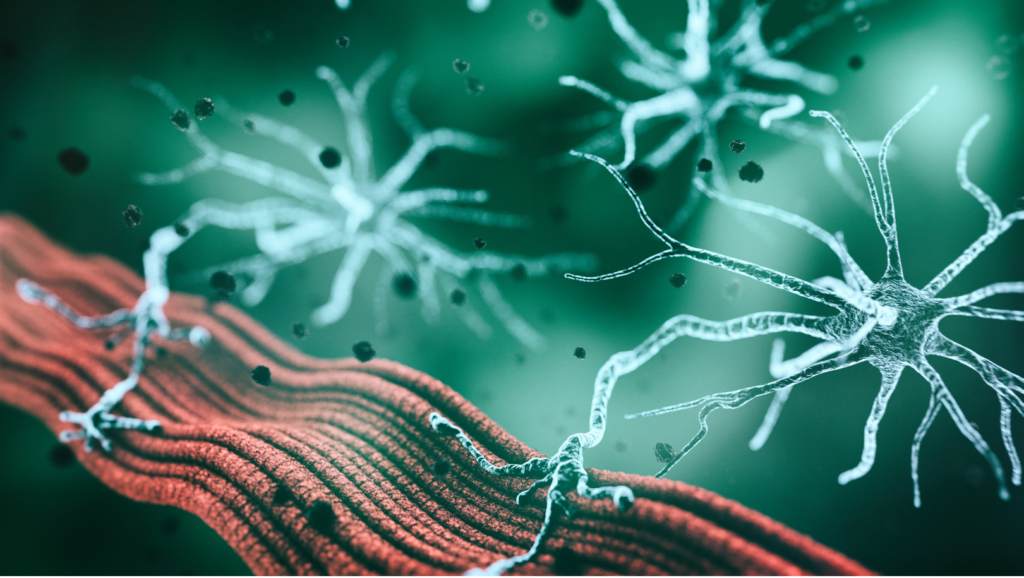What is Myasthenia Gravis
Myasthenia gravis is an autoimmune disease that is characterized by weakness of the skeletal muscles.
Symptoms
The symptoms include muscle weakness that increases during activity and decreases after resting. It also tends to vary in type and severity among affected individuals.
The symptoms of myasthenia gravis depend on the muscle involved. Since it can affect any skeletal muscle in the body its symptoms include drooping eyelids, difficulty swallowing, slurred speech, shortness of breath, a waddling gait and weakness in the neck, arms and legs.
Cause
Myasthenia gravis is caused by a breakdown in the normal transmission of nerve impulses to muscles at the neuromuscular junction. Normally impulses travel down a nerve to the nerve endings where a neurotransmitter or signaling chemical like acetylcholine is released. This neurotransmitter then binds to its receptors on the muscle and causes it to contract.
In myasthenia gravis, the body’s immune system produces antibodies that jam the acetylcholine receptors on the muscle and this prevents the muscle from contracting.

Evaluation
Diagnostic tests for myasthenia gravis include a blood test which detects the presence of acetylcholine receptor antibodies. However, this antibody is not present in all patients with myasthenia gravis.
Repetitive nerve stimulation is another test which can be done for patients suspected to have myasthenia gravis. In this procedure the doctor attaches electrodes to the skin over the muscles. Tiny currents of electricity are then sent through the electrodes to measure the nerve’s ability to send signals to the muscle. In myasthenia gravis this ability usually worsens as the muscle becomes fatigued.
Single fiber electromyography is another diagnostic investigation in which a fine wire is inserted into the muscle to measure the electrical activity between a single muscle fiber and the brain.
The edrophonium test is sometimes completed assist in confirmation of the diagnosis of myasthenia gravis. In this test, edrophonium chloride (Tensilon) is given in the vein to temporarily relieve muscle weakness since it prevents the breakdown of acetylcholine.
Treatment
There is no cure for myasthenia gravis but it can be controlled by therapies which improve muscle weakness. Medications used to treat this condition include neostigmine and pyridostigmine (Mestinon). These anticholinesterase agents improve transmission at the neuromuscular junction and increase muscle contraction and strength. Side effects include nausea, sweating and excessive salivation.
Corticosteroids like prednisone are also used since they suppress the immune system and reduce production of the antibodies. Side effects of steroids include weight gain, bone thinning and increased susceptibility to infections.
Immunosuppressive drugs like azathioprine (Imuran), cyclosporine (Neoral), mycophenolate mofetil (CellCept) and tacrolimus (Prograf) are also used to manage this condition. These drugs also improve muscle strength by reducing the production of the abnormal antibodies. Side effects of these medications are usually serious and include liver and kidney damage.
The surgical treatment of myasthenia gravis includes thymectomy which is the surgical removal of the thymus gland. This gland is suspected to trigger the production of the antibodies that block the acetylcholine receptors.
Other treatment modalities include plasmapharesis in the abnormal antibodies that block transmission at the neuromuscular junction are filtered from the blood by a machine. Side effects of this procedure include bleeding and muscle cramps. Intravenous immunoglobulin (IVIG) is equally effective, and more commonly used today.
The treatment of myasthenia gravis is important because if it is untreated the symptoms tend to progress over time until they cause life threatening complications like respiratory failure if the breathing muscles are affected.
In conclusion, Myasthenia gravis is a complex and challenging condition that affects individuals in unique ways. While there is currently no cure, advancements in medical research and treatment options offer hope for improved management and quality of life for those living with this autoimmune neuromuscular disorder.

